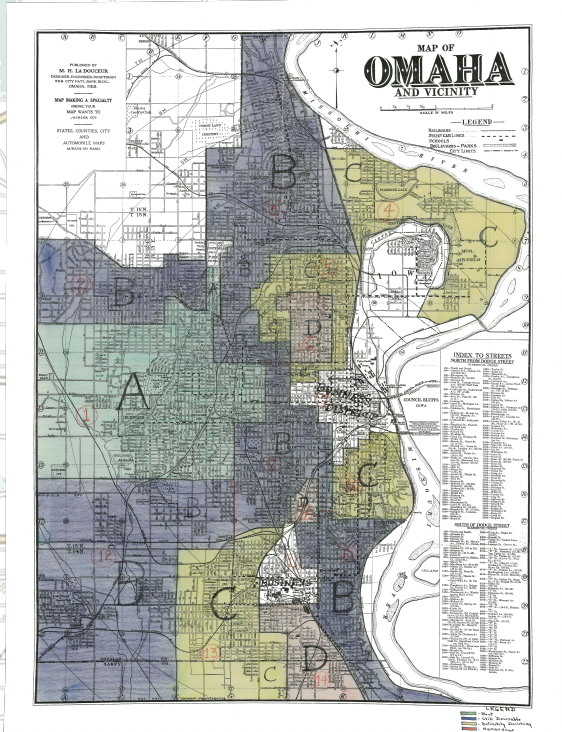The Vaughan reading was interesting to me because of the nature of the large questions it attempts to answer, especially the first map in the book. This map of Imola by Leonardo da Vinci stands as the first map in the book due to the accuracy of measurement that went into in to ensure it was accurate, although the center is arbitrarily set. Although I love da Vinci and his works all around, I chose this map for a different reason. Precision of measurement is what maps needed within urban areas to enforce a sense of otherness.

Below is a portion of the HOLC Security map or redlining map of Omaha that I found particularly interesting. As I mentioned above a strict understanding and measurement of a place is necessary to divide an area and create segregated and separated cities. However despite the extreme measurement that goes into a map like the HOLC Security maps, so much of the division is entirely arbitrary. Most of the other divisions on the map fall within city blocks and do not divide them in half, however parts of this map follow the boundaries of the highway rather than the city blocks which makes things very confusing. The justification that comes to mind for me when thinking about this is that the ASARCO plant is not sitting along a border with this scheme but map be if the divisions followed city blocks. Overall the divisions make little sense and appear to have been done in a haphazard way.

Displays of division are very interesting on maps as they are clear and easy to read. For the CNN map I figured it would make the most sense to look at a place I am familiar with so I went with Kansas City. Like Omaha, KC had some redlining issues that still lead to a certain level of separation today. It appears that there has been some reduction of separation in the city but it is still present and the visible white absence in the city is notable as well. The recovery from segregation in KC is also interesting due to the extension over the state lines. The concentration of white people in the Overland Park and Olathe area is also impressive. The accuracy that da Vinci’s map showcased is present in these maps and is what maps maps powerful in the first place.


























